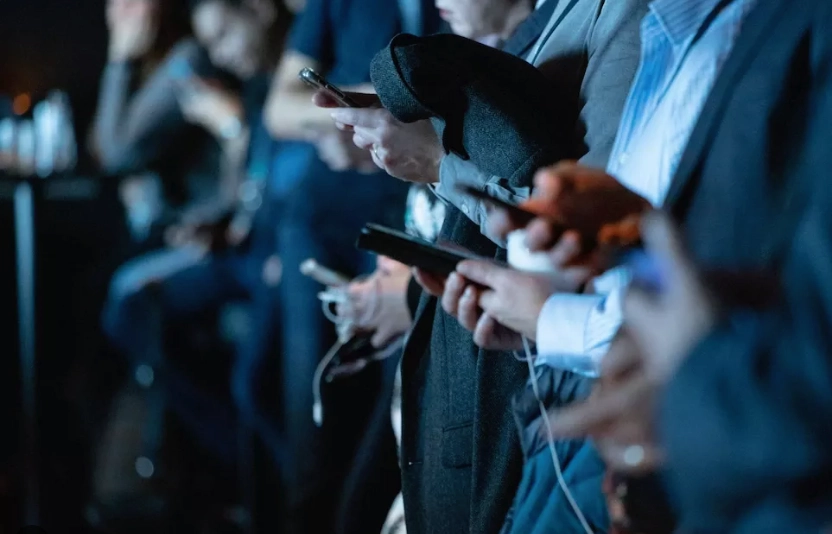Disinformation and extreme weather events have been selected as the most prominent near-term global risks according to the World Economic Forum’s (WEF) Global Risks Report 2024. However, there is nothing new about this, especially regarding misinformation. Indeed, it is consistent with previous editions of the report that foreshadowed its relevance on the global stage since its first publication 18 years ago.
Initially, it was labeled as a mere threat. But over time, it has evolved into a neuralgic risk, as its existence on social media since 2013 has eroded Western democracies and strengthened the virtual influence of illiberal governments abroad with inaccurate information and conspiratorial narratives. More recently, with the boom in artificial intelligence, new challenges, and concerns have arisen in dealing with it, particularly in election periods such as the current year 2024.
The phenomenon of disinformation is not new. What distinguishes it today is the omnipresent presence of the Internet and social networks, which have radically transformed the way we access information. Historically, different strategies have been created to mitigate the manipulation of public opinion. For example, during the Cold War, a working group known as “Active Measures” was established in the United States to counteract disinformation coming from the Soviet Union. Over time, “fact checkers” emerged, whose job is to detect errors and fake news in the media.
Recently, these strategies have expanded to the field of technology, since in social networks the dissemination of malicious content has been carried out through fake or automated accounts, known as bots. With the advance of artificial intelligence, this phenomenon has evolved to the point of creating fake users that operate on multiple platforms, being able to simulate human interactions on the Internet, or through “deep fakes”, which are falsified videos or images of people who are apparently real.
Words, definitions, and disinformation
Since their first editions, the WEF’s annual Global Risks reports have highlighted the challenges and changes in understanding this phenomenon globally. While the approach to disinformation has certainly been addressed, it has been characterized by a set of synonyms to describe it as: “massive digital misinformation, false information, fake news, post-truth, misinformation, deep fakes, disinformation”. At first glance, all these words seem to describe the same phenomenon, but this is not the case. This demonstrates the efforts that have been made to define it precisely in order to address it.
It is essential to turn to the specialized literature to properly understand these terms: “disinformation” refers to false information or hoaxes that are intentionally created and disseminated. “Misinformation” refers to the transmission of false information that is not intended to harm. Misuse of information or “malinformation” employs the malicious use of information, although it is not necessarily created, as it can come from leaks of personal data, damaging rumors, or private information. Finally, “Fake News” is a highly politicized, generic media term that has attempted to describe this phenomenon to large audiences.
18 years later: Tradition
Despite the different denominations attributed to the phenomenon, since the first edition of the global risk report in 2006, there was already a widespread understanding of disinformation as a future threat that could lead to the erosion of people’s trust in their governments. According to the WEF, this phenomenon would become a global concern in the next 10 years and fear would be presented as the potential driver for the dissemination of false information around the world. In 2012, it was pigeonholed as part of the dark side of connectivity, along with cyber-attacks, including banking fraud, and information theft, among others, which could seriously affect global governance.
In 2013, disinformation was finally classified as a global risk associated with social networks, which facilitated the spread of false information through echo chambers in times of high political tension, considerably increasing the polarization of users. Although 2016 marked a turning point with events such as Brexit, the election of Donald Trump, and the revelation of the Panama Papers, among others, disinformation as a risk was surprisingly not included in this annual report, nor in the two previous ones. Due to this oversight, in 2017 and 2018 disinformation came to the forefront of publications as one of the potential causes of the crisis in Western democracy.
In the last five years, disinformation has emerged as a relevant global risk for WEF analysts. This phenomenon has become more important due to the dynamics of the infodemic caused by the COVID-19 pandemic, the advances, and scope of artificial intelligence, the persistence of false information on the web, among other factors. Addressing this phenomenon has become a priority for various social and political actors. Therefore, its preponderance in 2024 and the next two years is not surprising, particularly considering that nearly 49% of the world’s population will go to the polls, including 18 countries in Africa, 6 in the Americas, 8 in Asia and 9 in Europe (and also European Union).
These global risk perception reports represent a significant intellectual exercise aimed at reducing human uncertainty about the future. However, they have their limitations, as they cannot anticipate everything that may happen. In compiling and synthesizing the most pressing phenomena of the last two decades, disinformation has undoubtedly gained a preponderant place in the world due to its close connection with the daily use of technology. This places it not as a novelty, but as a traditional phenomenon in this period of history.
*Translated by Janaína Ruviaro da Silva from the original in Spanish.













